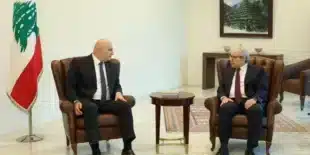After months of stagnation, Israel and Hamas appear to be making progress toward a ceasefire to end their prolonged conflict, which has lasted for 14 months. Recently, key mediators from the U.S., Qatar, and Egypt have resumed talks, reporting increased willingness from both sides to reach an agreement. A significant development is Hamas’s willingness to show more flexibility on the timing of an Israeli withdrawal from Gaza, while Israel’s defense minister, Israel Katz, has expressed optimism, stating that a deal is closer than ever.
Although critical details remain unresolved, there is a renewed sense of hope that had been absent for some time. This shift is attributed to several factors, including the heavy losses Hamas has suffered during the war, its growing isolation after Hezbollah’s ceasefire with Israel, and setbacks for Iran, which has been a key supporter of both Hamas and Hezbollah.
Both the outgoing Biden administration and the incoming Trump administration in the U.S. have indicated a desire to finalize a deal before the inauguration of President Trump on January 20.
According to Egyptian and Hamas officials, the ceasefire agreement would unfold in stages. The first phase would include a cessation of hostilities, the exchange of Israeli hostages for Palestinian prisoners, and a significant increase in humanitarian aid to Gaza. Israel asserts that Hamas is holding 100 hostages, with many believed to have died.
The initial ceasefire phase would last between six and eight weeks. During this period, Hamas would release around 30 hostages, including several dual U.S.-Israeli citizens. In return, Israel would free hundreds of Palestinian prisoners, including some serving long sentences for their involvement in violent attacks.
The deal would also lead to a substantial increase in aid to Gaza, which has been devastated by the war. The territory has been facing a severe humanitarian crisis, with 90% of its 2.3 million residents displaced. The agreement would likely include the reopening of the Rafah crossing with Egypt, a critical passage for Palestinians seeking to leave Gaza, which has been closed since May due to the Israeli invasion.
Mediators are exploring the possibility of resurrecting a 2005 agreement that allowed the Palestinian Authority to manage the Rafah crossing with European Union observers. This agreement collapsed in 2007 when Hamas took control of Gaza.
As part of the first phase of the ceasefire, Israeli forces would begin withdrawing from some Palestinian population centers, allowing displaced Palestinians to return. However, Israeli troops would remain in certain areas, such as the strategic Philadelphi corridor along Gaza’s border with Egypt.
Negotiations would continue during the ceasefire to finalize a comprehensive agreement that would bring an end to the war, ensure a full Israeli withdrawal, and address the release of remaining hostages and bodies held by Hamas. Talks would also focus on the future governance of Gaza and the rebuilding process following the extensive destruction caused by the conflict.


